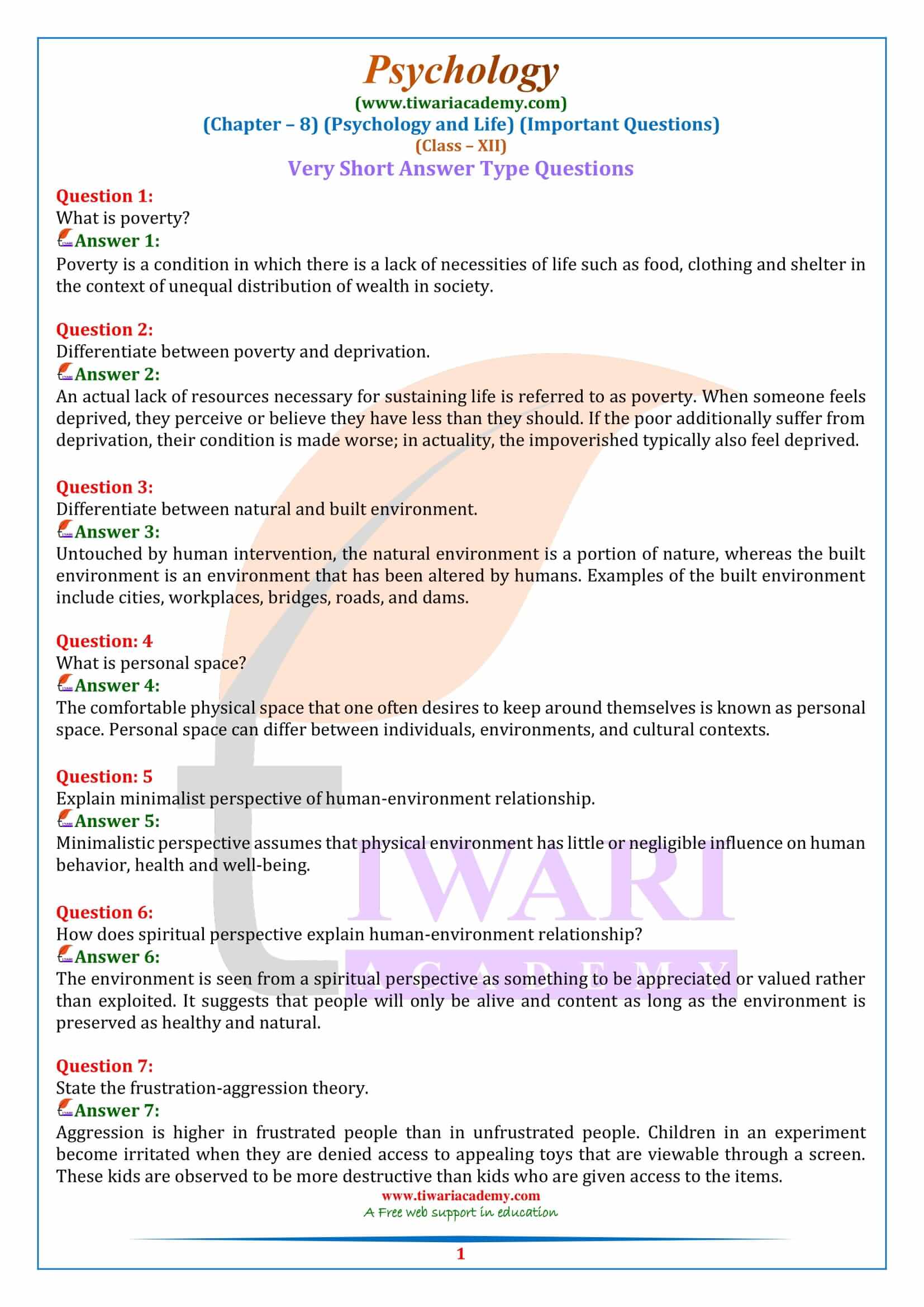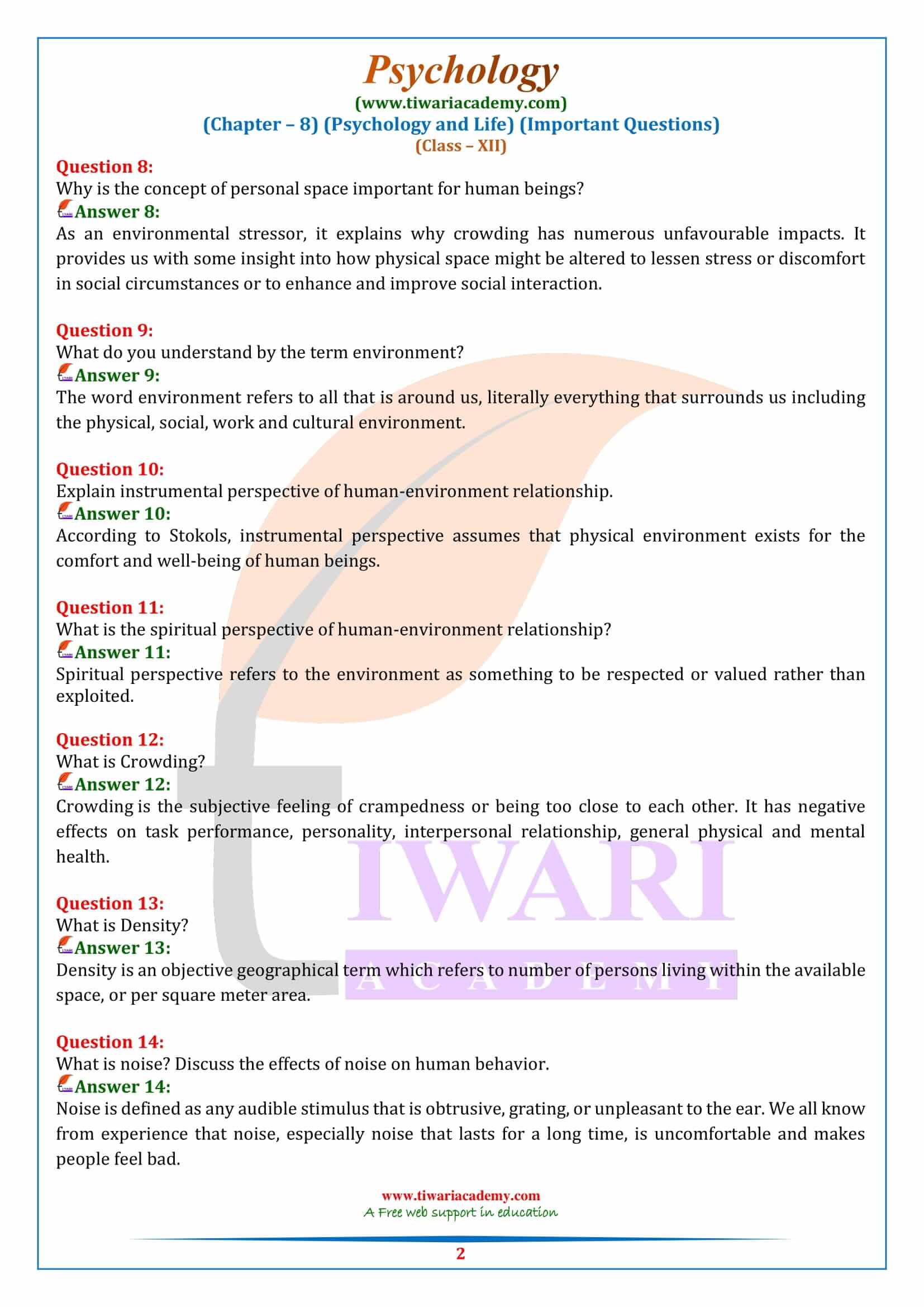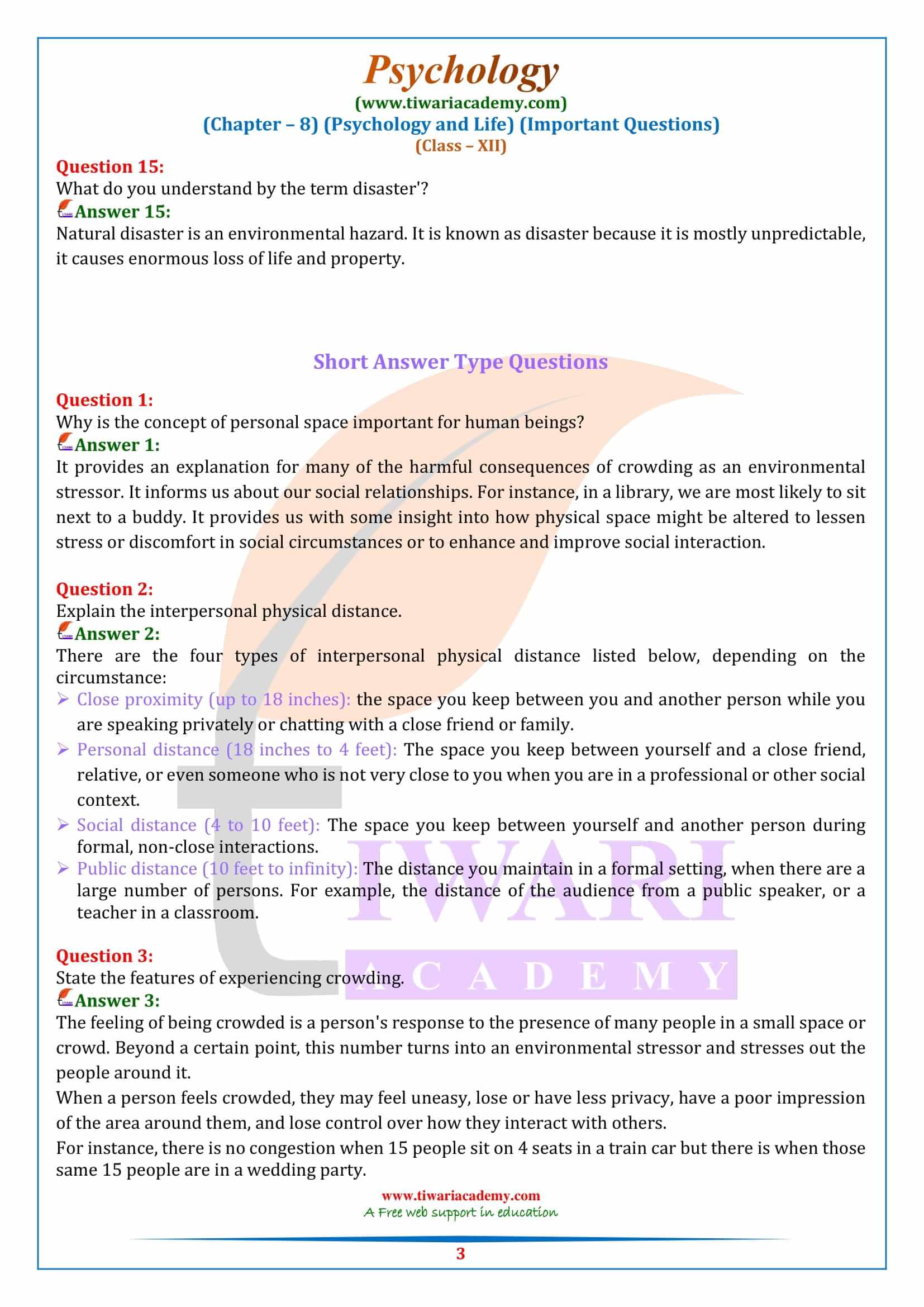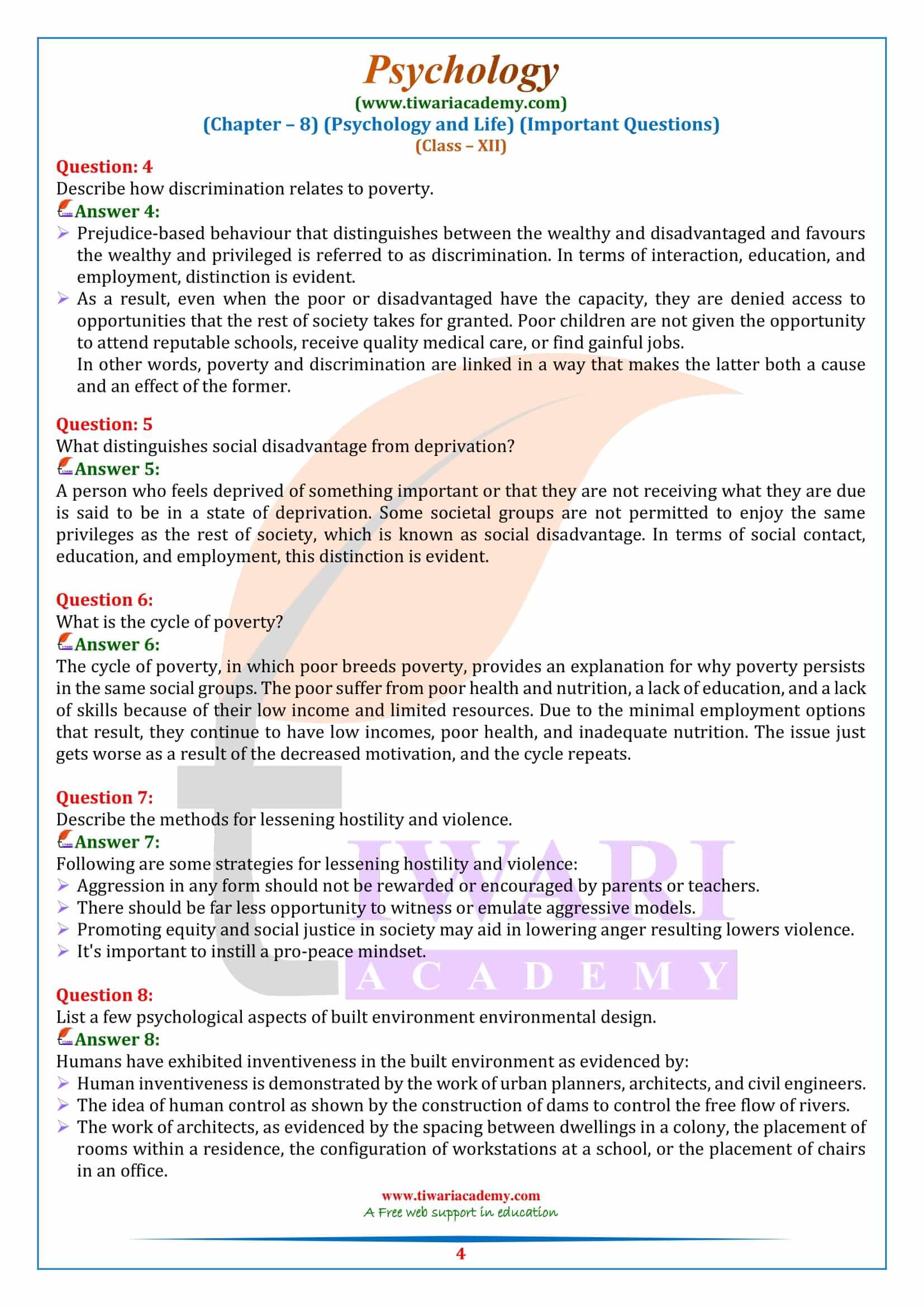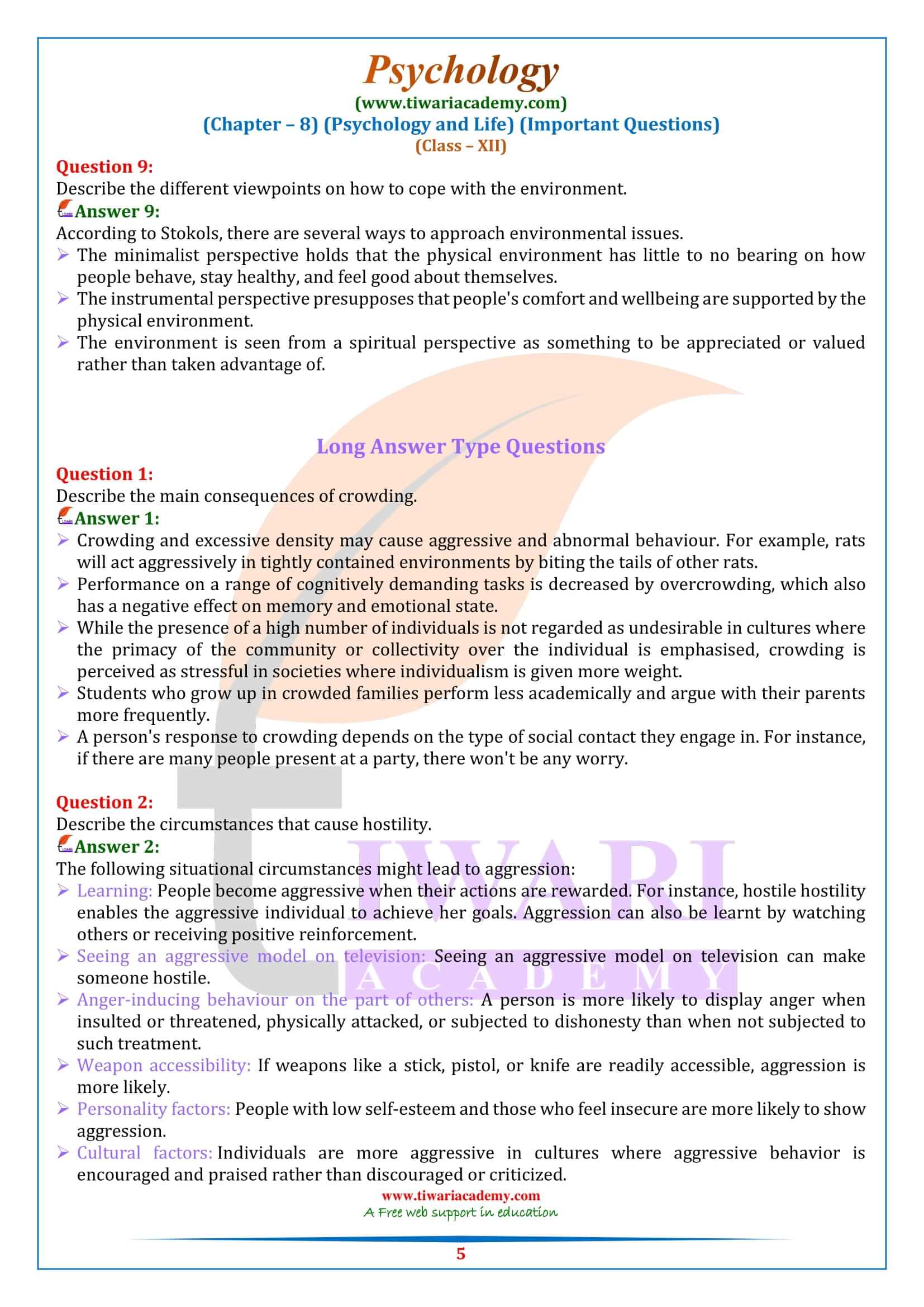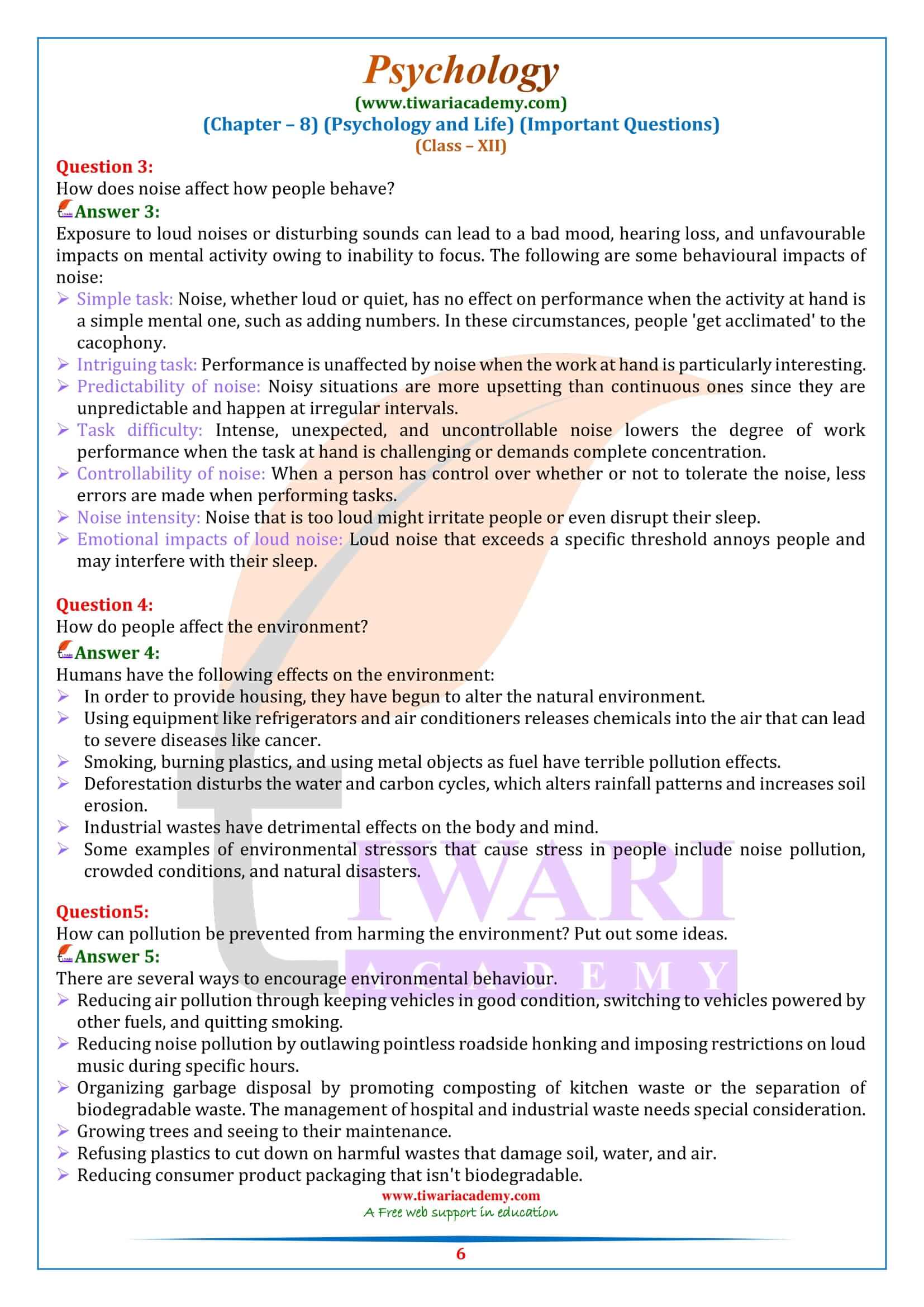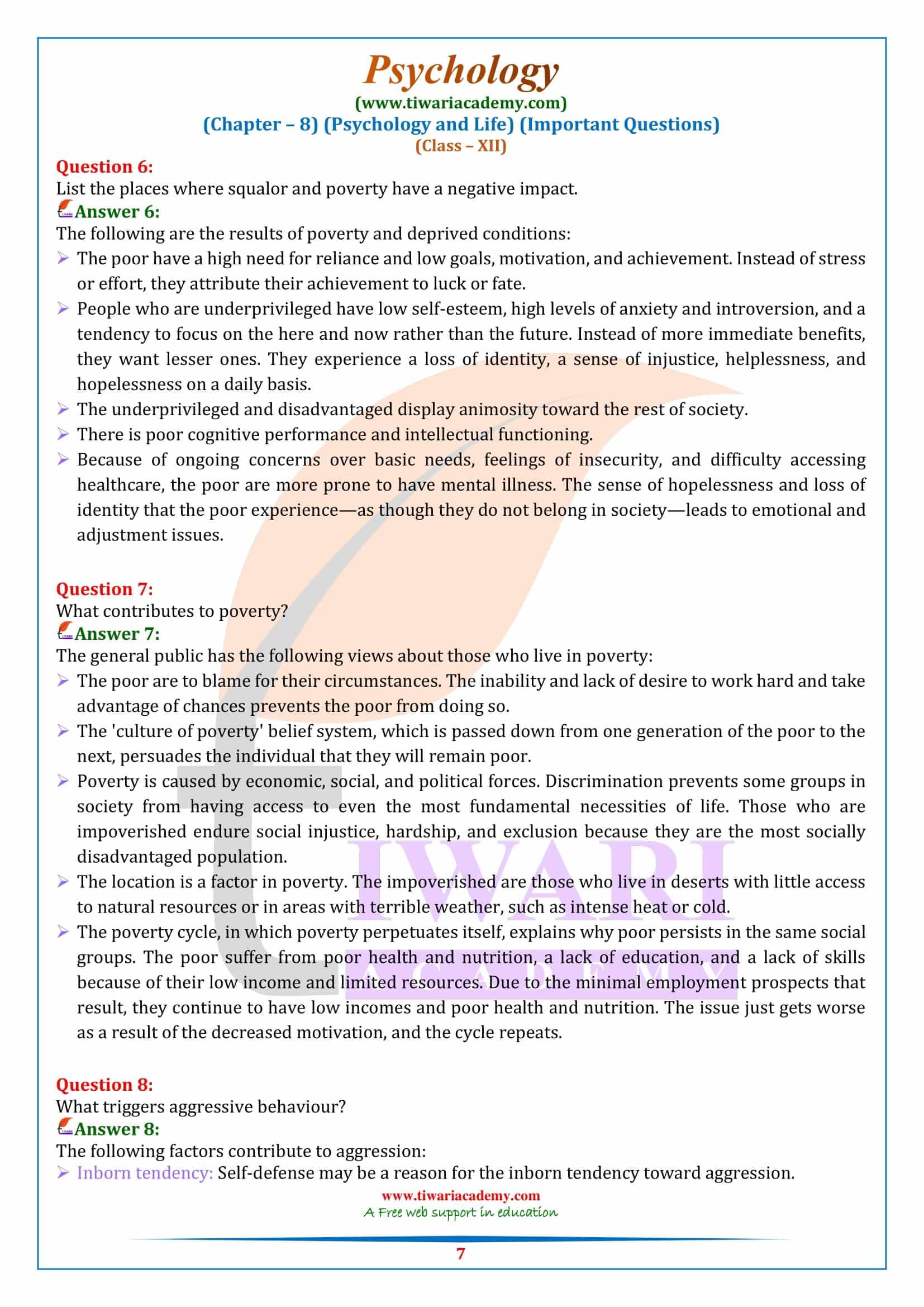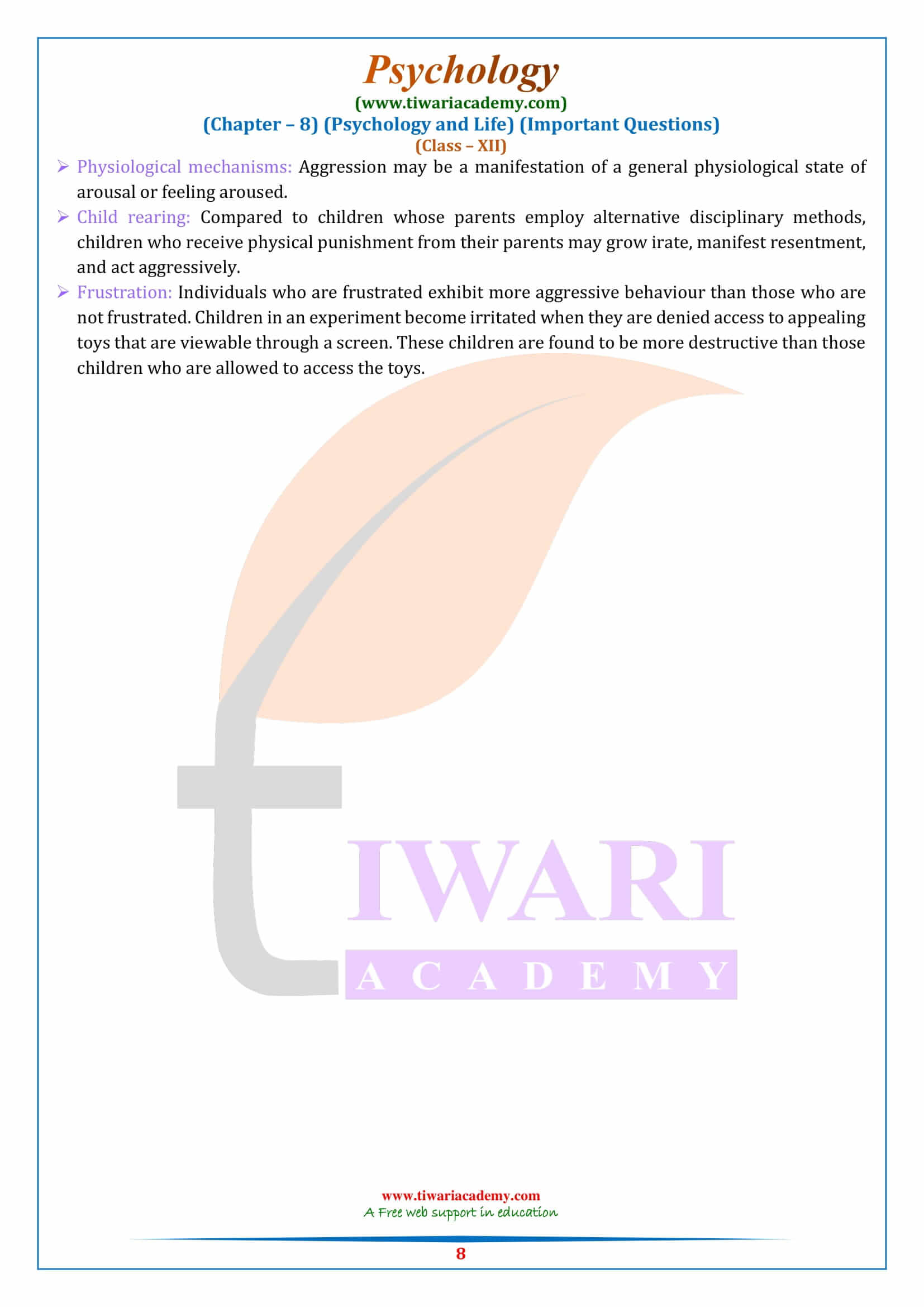Class 12 Psychology Chapter 8 Important Questions of Psychology and Life updated for CBSE and State board students modified for new session 2025-26. Class 12 Psychology Chapter 8 Extra Questions help the students to revise the entire chapter quickly.
Class 12 Psychology Chapter 8 Important Questions
Class 12 Psychology Chapter 8 Extra Questions Answers
What triggers aggressive behaviour?
The following factors contribute to aggression:
- Inborn tendency: Self-defense may be a reason for the inborn tendency toward aggression.
- Physiological mechanisms: Aggression may be a manifestation of a general physiological state of arousal or feeling aroused.
- Child rearing: Compared to children whose parents employ alternative disciplinary methods, children who receive physical punishment from their parents may grow irate, manifest resentment, and act aggressively.
- Frustration: Individuals who are frustrated exhibit more aggressive behaviour than those who are not frustrated. Children in an experiment become irritated when they are denied access to appealing toys that are viewable through a screen. These children are found to be more destructive than those children who are allowed to access the toys.
What distinguishes social disadvantage from deprivation?
A person who feels deprived of something important or that they are not receiving what they are due is said to be in a state of deprivation. Some societal groups are not permitted to enjoy the same privileges as the rest of society, which is known as social disadvantage. In terms of social contact, education, and employment, this distinction is evident.
What is the cycle of poverty?
The cycle of poverty, in which poor breeds poverty, provides an explanation for why poverty persists in the same social groups. The poor suffer from poor health and nutrition, a lack of education, and a lack of skills because of their low income and limited resources. Due to the minimal employment options that result, they continue to have low incomes, poor health, and inadequate nutrition. The issue just gets worse as a result of the decreased motivation, and the cycle repeats.
Describe the methods for lessening hostility and violence.
Following are some strategies for lessening hostility and violence:
- Aggression in any form should not be rewarded or encouraged by parents or teachers.
- There should be far less opportunity to witness or emulate aggressive models.
- Promoting equity and social justice in society may aid in lowering anger resulting lowers violence.
- It’s important to instill a pro-peace mindset.
Explain the interpersonal physical distance.
There are the four types of interpersonal physical distance listed below, depending on the circumstance:
- Close proximity (up to 18 inches): the space you keep between you and another person while you are speaking privately or chatting with a close friend or family.
- Personal distance (18 inches to 4 feet): The space you keep between yourself and a close friend, relative, or even someone who is not very close to you when you are in a professional or other social context.
- Social distance (4 to 10 feet): The space you keep between yourself and another person during formal, non-close interactions.
- Public distance (10 feet to infinity): The distance you maintain in a formal setting, when there are a large number of persons. For example, the distance of the audience from a public speaker, or a teacher in a classroom.
Why is the concept of personal space important for human beings?
It provides an explanation for many of the harmful consequences of crowding as an environmental stressor. It informs us about our social relationships. For instance, in a library, we are most likely to sit next to a buddy. It provides us with some insight into how physical space might be altered to lessen stress or discomfort in social circumstances or to enhance and improve social interaction.
List a few psychological aspects of built environment environmental design.
Humans have exhibited inventiveness in the built environment as evidenced by:
- Human inventiveness is demonstrated by the work of urban planners, architects, and civil engineers.
- The idea of human control as shown by the construction of dams to control the free flow of rivers.
- The work of architects, as evidenced by the spacing between dwellings in a colony, the placement of rooms within a residence, the configuration of workstations at a school, or the placement of chairs in an office.
What is noise? Discuss the effects of noise on human behavior.
Noise is defined as any audible stimulus that is obtrusive, grating, or unpleasant to the ear. We all know from experience that noise, especially noise that lasts for a long time, is uncomfortable and makes people feel bad.
What is Crowding?
Crowding is the subjective feeling of crampedness or being too close to each other. It has negative effects on task performance, personality, interpersonal relationship, general physical and mental health.
